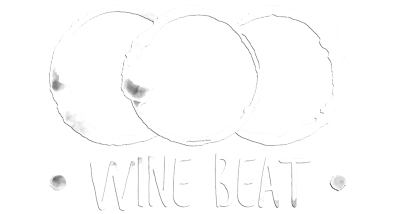Listen To The Podcast Here:

The Third Stage In The Winemaking Process
Felix Egerer is our winemaker guide again in this our 3rd instalment of Cocktails With Winemakers. This is The Wine Beat sub-series on winemaking operations. For this series of podcasts we are not travelling or visiting wine regions – we are staying home by the fire to talk about the nitty gritty of winemaking. In this episode we talk about the magic of fermentation.
Here are links to CWW Instalment #1 and CWW Instalment #2.
Is Great Wine Made In The Vineyard Or In The Cellar?
Felix is primed with a few margaritas and he’s ready to give us key insights into the magical part of winemaking. This is the part when a few billion humble bugs (in the form of yeast primarily) turn the sugar substrate of wine grapes into everybody’s favourite beverage, wine. Felix dodges the question of whether great wine is grown in the vineyard or made in the cellar. He’s diplomatic about this because the whole process is a wonderful combination of art, science and magic that come together in the wine. You can’t easily give credit to one part of the viticultural and winemaking dance to either partner. They can only create something sublime if all of the choreography comes together.
Note that Felix works at one of BC’s best wineries: Tantalus Vineyards (click here)

The Heavens Granted A Gift….
A lot of cultures have assumed that wine is God’s gift to humankind because of its seemingly supernatural origin. For millenia humans have found this magical gift of grapes spontaneously converting to a slightly fizzing alcoholic treat. Grapes are unique among fruit for spontaneously producing decent wine without much intervention from humans. And wine is unique among all of our favourite boozy drinks in that it will occur naturally from the yeast that exists all around the vineyard. This has made wine a powerful feature in myths and religion for at least 7,000 years. It’s all about the magic of fermentation.
…From A Match Made In Heaven
Grapes and yeast live together in a harmonious relationship and are almost inseparable. Everywhere you find grapes you will find yeast. And if you leave them alone for any length of time they will start making wine. That’s just what they do. As Felix explains, it is the winemakers’ job to nurture and facilitate this relationship. The winemaker might be very hands off or she may be more interventionist and controlling when it comes to the magic of fermentation. But the wine will come one way or another. It is more about stewarding the fermentation process to get an end product that is both delicious and allows the grapes and yeast to express themselves.

Felix talks about some of the challenges of managing fermentations as well. Because things can go wrong – very wrong. Winemakers lose sleep over fermentations that are producing off flavours or aromas. Even worse, a fermentation can become stuck if the yeast stop doing their job for some reason. There can be many reasons for a stuck fermentation but when it occurs the winemaker is faced with the potential that an entire tank may never make it to the point of becoming a fully fermented wine. If the yeast can’t be resuscitated the tank may be ruined. So fermentation must be brooded over and watched and tested and managed by a careful cellar team. There’s more than just magic to the magic of fermentation.
And Then There’s Malolactic Fermentation
Or malolactic “conversion” as Felix points out. Much more mysterious and even more finicky than alcoholic fermentation with yeast, “malo” involves bacteria. Malolactic bacteria convert malic acid (a more overtly sharp tasting acid) to lactic acid (a gentler, less tangy acid). This process has potentially lovely benefits in terms of the sensory aspects of the wine. This is especially so in red wines where you may not want too much acidic zing in the wine. But it also has important stability benefits. Consider that these bacteria can potentially spring to life after the wine is bottled. In that horrific case thousands of bottles of wine may take on new life and start having biologic activity while on the store shelf or in the wine buyer’s cellar. A commercial and reputational nightmare can unfold.

Join Us For The Full “Cocktails” Series (Thus Far)
There are two preceding episodes, the first on vineyard harvest and the picking decision and the second on crushpad operations during the harvest winemaking season. Felix is our guide for all of these segments and together they give a pretty good introduction into the basics of making wine. There’s more to come in the future so stay tuned but for now tune in to these three episodes of Cocktails With Winemakers!
More Great Content On The Wine Beat!
Come Along To Visit “The Best Wine Shop In The World” (IMHO!)
Something gonzo, something noble and something beautiful – “The Wine-Soaked Lens Of Matt Wilson”
Four Great Podcasts Recorded On Location In The Loire – Starting with Pierre-Henri Gadais in the perfectly Atlantic-Ocean-influenced Muscadet Sèvre et Maine Region
